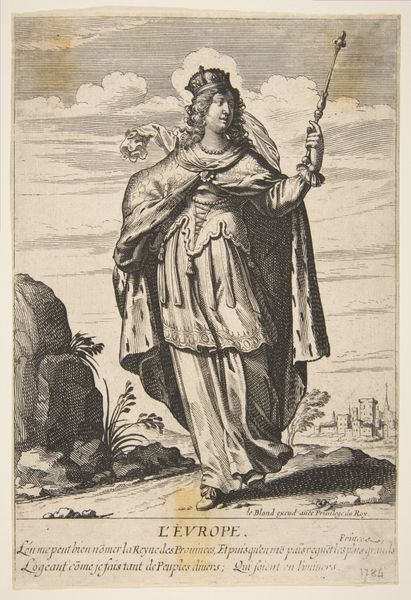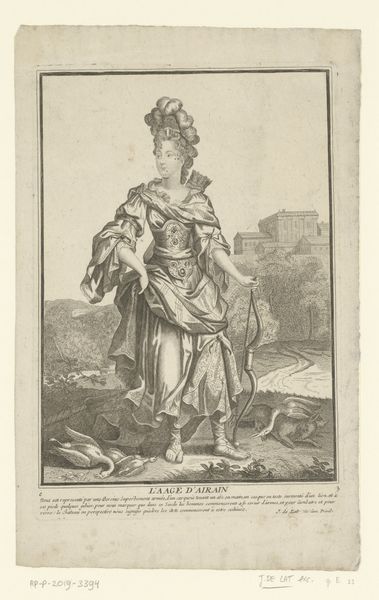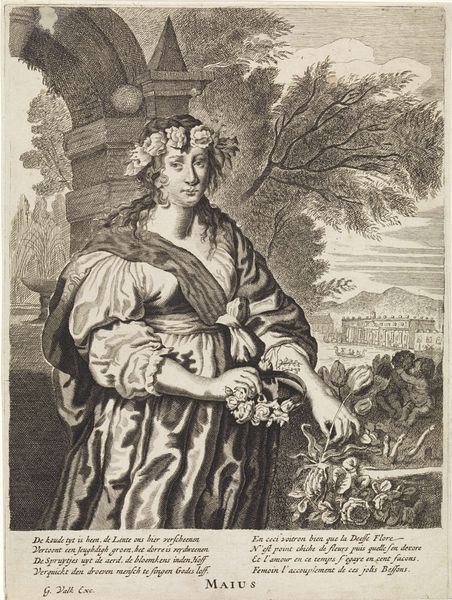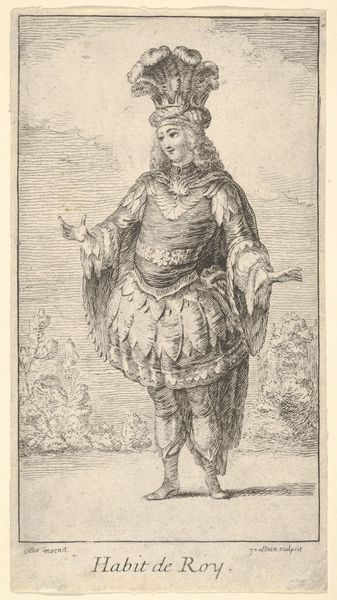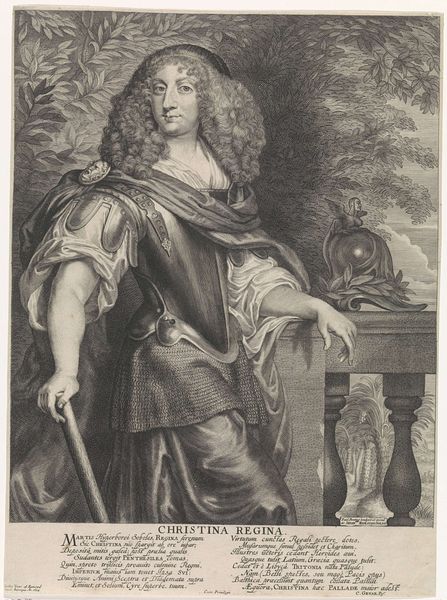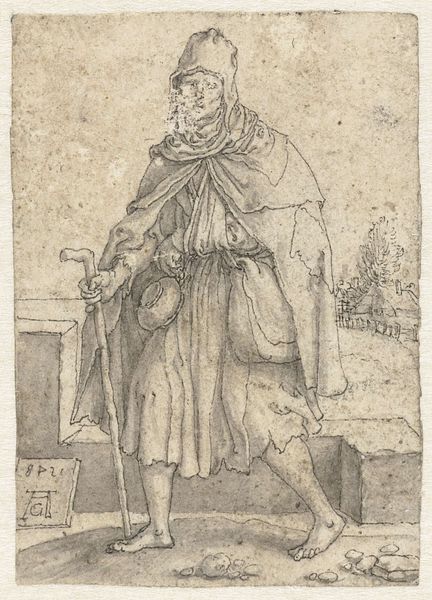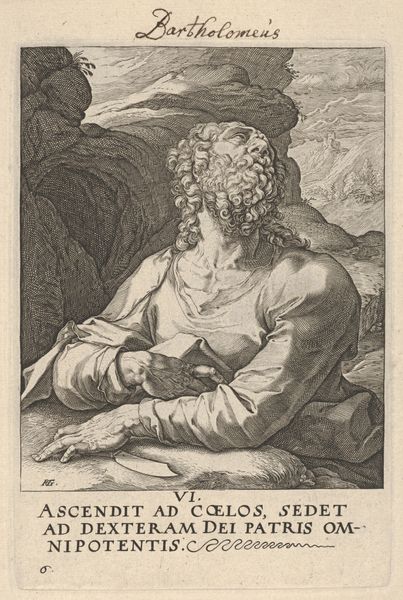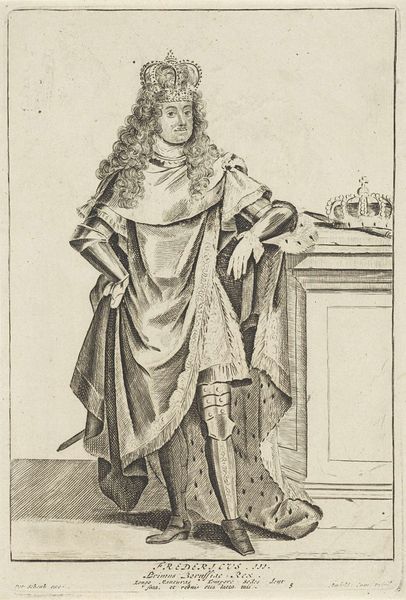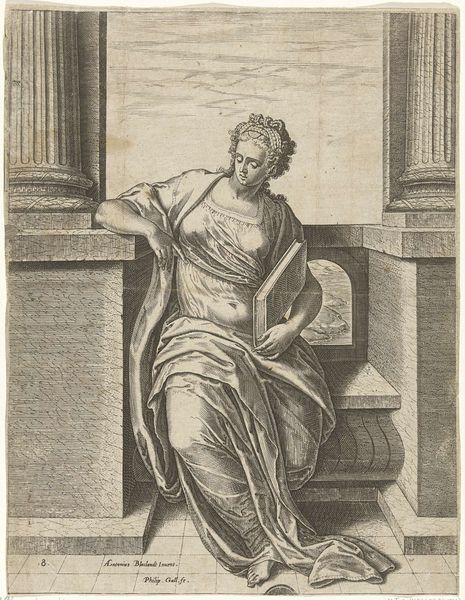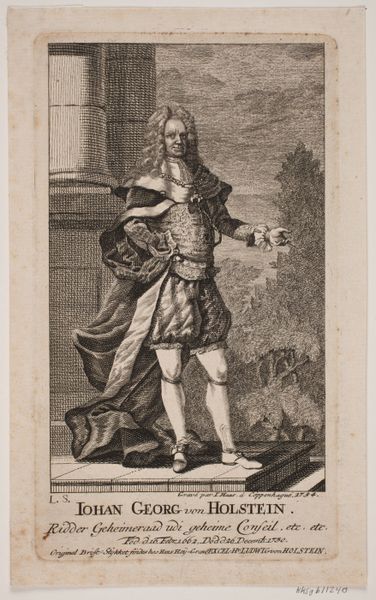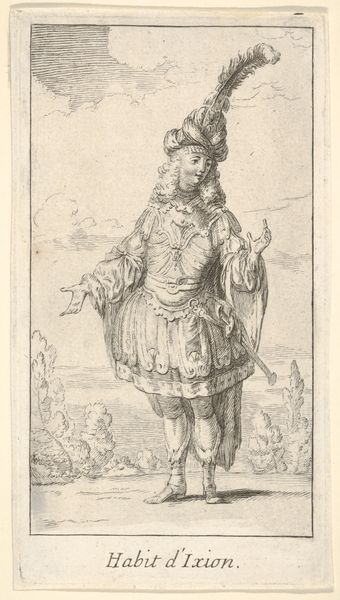
Portrait of J.-B. de Boyer, Marquis d'Argens 1780 - 1827
0:00
0:00
Dimensions: 6 5/8 x 4 5/8in. (16.9 x 11.7cm)
Copyright: Public Domain
Curator: Here we have Jean-Baptiste-François Bosio's "Portrait of J.-B. de Boyer, Marquis d'Argens," a drawing rendered in ink, created sometime between 1780 and 1827, now residing at the Metropolitan Museum of Art. What are your first impressions? Editor: Immediately, the fluidity of the ink catches my eye. It creates a soft, almost dreamy effect, despite the rather formal subject. The man's robes look like they’re flowing even though he's sitting perfectly still. Curator: Indeed. Bosio, though born in Monaco, achieved prominence in Paris during a period where portraits reflected evolving social structures and the shifting status of the aristocracy before and after the French Revolution. D'Argens, known for his libertine philosophy and connections to Prussian royalty, would have commissioned this image as a means of projecting his intellectual standing. Editor: And the material supports this, right? The use of ink allows for mass reproduction—engravings, prints—making his image widely available. It's a statement of status, achieved through both artistic skill and clever manipulation of available technologies of image production. Also, what exactly is he holding? Sheet music? Curator: Precisely. The musical score alludes to D'Argens's intellectual pursuits and patronage of the arts, integral components to Baroque aristocratic identity. The work presents a carefully constructed image intended for public consumption. We must remember the powerful role art played in shaping reputations and influencing social dynamics. Editor: The way the light falls also emphasizes this. See how Bosio captures the sheen of his silk robe? That's no accident; textiles in this period meant intense, often brutal labor overseas. The elegance portrayed is directly connected to systems of global exploitation. Even something as simple as the sitter's wig – look at all those curls painstakingly reproduced with layered strokes of ink. Curator: Very insightful observations! It underscores how even a seemingly straightforward portrait becomes a complex interplay of personal ambition, material realities, and broader socio-political currents. It shows us a figure conscious of his position and keenly aware of his role within the theatre of power. Editor: Exactly! This is a fascinating glimpse into not only the man, but the intricate web of materials, labor and meaning spun around him in his time. Curator: A sentiment with which I thoroughly concur. Thank you.
Comments
No comments
Be the first to comment and join the conversation on the ultimate creative platform.
